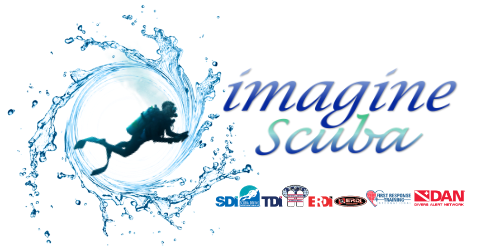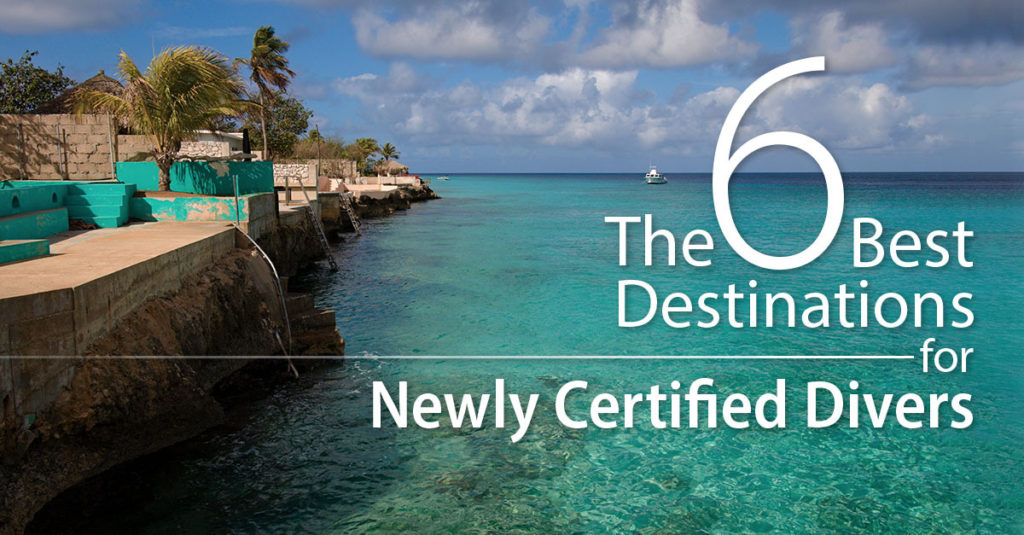From my first underwater breaths in a cloudy municipality swimming pool, through four chilly open water dives in a Scottish sea loch, why I persevered with diving beyond my open water course remains a mystery to this day. However, persevere I did, and after achieving an advanced certification several months later, my limited diving experience consisted of murky green water, plumes of silt, and the naive assumption that ending each dive chilled to the bone was just a necessary part of the process.
So, my first dive trip to the Egyptian Red Sea was eagerly anticipated, with the promise of stunning corals, fascinating shipwrecks, and an abundance of marine life the likes of which I had never encountered. However, my forays around dark Scottish lochs did little to prepare me for the bottomless walls, vast chasms, and endless blue water that the Red Sea is famous for. Instead of reveling in an awesome new experience, I was overwhelmed! Used to diving with my nose inches away from the mud, I felt lost in a vast underwater landscape where shafts of sunlight disappeared into the deep, leaving me adrift with no point of reference.
I learned a lot about diving on that trip, and I’m pleased to say I have returned to the Red Sea many times since to fully appreciate all the wonders it has to offer. This experience was a valuable lesson that any new dive environment should be approached with the appropriate levels of caution and respect and that not all dive destinations are suitable for novice divers. So, if you’re a newly qualified diver, read on to discover my suggestions for suitable dive destinations.
Bonaire
Known as the shore-diving capital of the Caribbean, Bonaire’s warm, clear waters and gentle beach entries offer a plethora of dive sites perfect for those still finding their fins. Conveniently located south of the hurricane belt, year-round diving offers predictable conditions, little or no current, and water temperatures that rarely drop below 80oF (27oC). The island boasts a well-established diving infrastructure, with conveniently marked dive sites and graded entry points at over 80 sites. Most visitors simply rent a kit, purchase a dive guidebook, and take to the highway, enjoying the freedom to explore as much or as little of Bonaire’s coast as they see fit.
Playa del Carmen, Mexico
Located on the southern coast of Mexico’s Yucatan Peninsula, Playa del Carmen is an ideal destination for new divers looking to broaden their experience and build on their newfound skills. Situated on the second-largest barrier reef in the world, numerous inshore sites offer easy diving in comfortable conditions, accessible throughout the year. But what makes Playa del Carmen a real gem is the variety of underwater experiences on offer, many perfect for inexperienced divers keen to expand their repertoire. From encounters with pelagic superstars to exploring otherworldly freshwater caverns, such a wealth of subsurface activities makes Playa del Carmen an ideal destination for a newbie dive break.
Puerto Galera, Philippines
Giant-striding straight into a world-class photography destination might seem a little daunting to some newly qualified divers. However, Puerto Galera is a great choice for diving groups of mixed abilities. Situated on the northern coast of Mindoro Island in the Philippines, Puerto Galera is known for its diversity of inshore dive sites, abundant marine life, and comfortable year-round conditions. Seasoned divers flock here to snap some of the world’s most fascinating sea creatures, and while dive operators tend to be geared towards underwater photographers and their specialized equipment, this shouldn’t deter less experienced visitors from getting involved. Sites range in depth from 16 to 164 feet (5 to 50 meters), and some of the best areas for photography are reasonably shallow, making them perfect beginner sites. Whatever your experience level, Puerto Galera offers something for everyone.
Ko Tao, Thailand
A hugely popular beginner dive destination, Ko Tao, translated as Turtle Island, is a mecca for newbie scuba enthusiasts seeking their first dive certification. Just off Thailand’s east coast, the warm, clear waters of the Gulf of Thailand offer up an underwater tropical paradise and an awesome introduction to the world of scuba. Dive courses are affordable, the dive centers have a good reputation, and the diving is comparable with some of the finest in Thailand. Many qualified divers also choose Ko Tao to further their qualifications, taking advantage of relaxed and easy boat diving in calm, clear waters. The island’s shores are a natural aquarium offering the perfect environment to learn and improve your dive skills.
La Paz, Mexico
It goes without saying that gaining a scuba certification goes hand in hand with starting a diving bucket list. For many divers, encounters with ‘big animals’ are at right the top of their list, and few places offer better experiences with the world’s most exciting pelagic giants than La Paz. In an ideal location on the southeast tip of Mexico’s Baja California peninsula, La Paz sits at the meeting point of the Pacific Ocean and the Sea of Cortez. On its doorstep, the annual migration of some of the ocean’s biggest creatures provides visitors with unrivaled access and near-guaranteed sightings of sharks, marine mammals, and ocean-going fish. While diving is great throughout the year, I would recommend visiting in October when the sea lion colonies are active and the whale sharks have arrived.
Utila, Honduras
Popular with backpackers and independent travelers, Utila’s laid-back vibe and colorful nightlife is reflected in the island’s vibrant underwater scene. One of the three major Bay Islands just off the north coast of Honduras, Utila is relatively undeveloped and a great budget alternative to other Caribbean destinations. Boasting close to 100 dive sites, there is something for everyone here in the lively reefs, caverns, and walls. There’s even a shipwreck to explore for the more adventurous newbies. When the weather deems dive sites on one side of the island inaccessible, simply move to the opposite coast and carry on diving. While diving is fantastic year-round, those visiting between March and May, and August and October, are in with a good chance of encountering a passing whale shark.
There are many fantastic destinations suitable for new divers, and reputable operators should tailor the dives they arrange to match your ability. Remember, the best way to improve your diving and gain experience is to simply get out and dive. So, my advice is to do your research, and then take the plunge!
By Agnes Aasmaa

